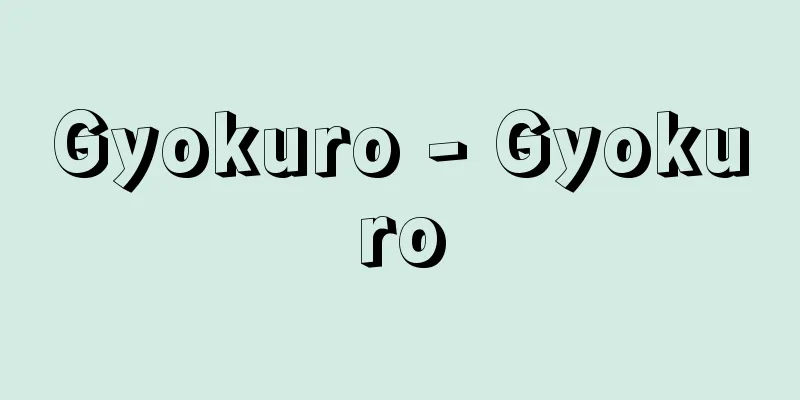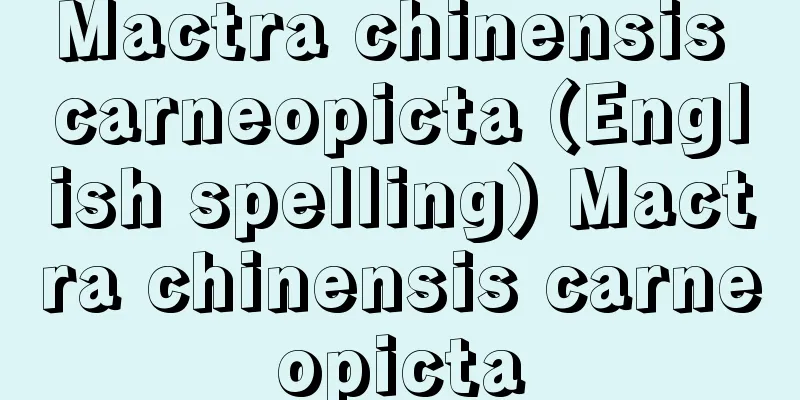Gyokuro - Gyokuro

|
This is the highest quality Japanese green tea. It is made from tea buds that are carefully picked from mature tea fields that have been heavily fertilized (mainly nitrogen fertilizer) during the first tea season, then covered to block out sunlight. The tea is made in the same way as sencha, through the process of steaming, rough rolling, rolling and twisting, medium rolling, refined rolling, and drying, but because the leaves are soft and contain a lot of moisture, the rolling and heating are done less than with sencha. Gyokuro was first produced during the Tenpo era (1830-1844) when Tokuo Yamamoto, the sixth generation tea merchant of Edo's Yamamotoyama, went to Uji (Kyoto Prefecture) and squeezed and dried tea in the process of being made into tencha, naming it gyokuro and spreading it to the world. It is a relatively new variety of tea. Famous producing areas are Uji, Yame (Fukuoka Prefecture), and Okabe (Shizuoka Prefecture), but the amount produced is less than 1% of the total amount of Japanese tea. High-quality tea is slender and twisted into needles, looser than sencha, and dark green in color with a glossy finish. It has a unique aroma called ooika, similar to high-quality nori seaweed, and is best when it is clean. When brewed, the water is less yellow than sencha and is a pale yellow-green, and when cooled it becomes cloudy due to the high caffeine content. It also contains about twice the amount of amino acids (mainly theanine) as regular sencha, and has little tannin, giving it a particularly strong umami and sweet flavor. It is a tea that is drunk in small amounts, savoring the taste. The amount of tea for three people is about 10 grams (three tablespoons), and 70 ml of water cooled to 55-60°C is poured in and left to infuse slowly for about two and a half minutes. [Kuwabara Muneta] [Reference] |Source: Shogakukan Encyclopedia Nipponica About Encyclopedia Nipponica Information | Legend |
|
日本の緑茶の最高級品。一番茶期に多肥栽培(おもに窒素肥料)をしたチャの成木園に覆いをして日光を遮り、緑が濃く柔らかく育った芽をていねいに摘採したものを原料とする。製茶の工程は、煎茶(せんちゃ)と同様に、蒸し→粗揉(そじゅう)→揉捻(じゅうねん)→中揉(ちゅうじゅう)→精揉(せいじゅう)→乾燥を経てつくられるが、葉質は柔らかく水分も多いので、もむ力と加熱を煎茶に比べると控え目にする。 玉露が初めてつくられたのは、天保(てんぽう)年間(1830~44)に江戸の茶商山本山6代目の山本徳翁が宇治(京都府)に出たとき、てん茶の工程中のものをもんで乾燥、これを玉露と名づけ世に広めたことに始まるとされ、茶種としては比較的新しいものである。産地は宇治、八女(やめ)(福岡県)、岡部(静岡県)が有名であるが、生産量は日本茶全体の1%にも満たない。 高級品の形状は細くよれて針状、締まりは煎茶より緩く、色は緑が濃くてつやがある。香りは覆(おお)い香(か)と称して海苔(のり)の高級品のような独得の香りがあって、すっきりしているものがよい。茶をいれたときの水色(すいしょく)は煎茶に比べると黄色の度合いは少なく淡黄緑色で、冷めると成分中にカフェインが多いため白濁してくる。なお成分中には普通煎茶の約倍量のアミノ酸(おもにテアニン)を含み、タンニンは少ないのでとくにうま味、甘味を強く感じる。少量を味わいながら飲む茶である。茶の量は3人分で約10グラム(大さじ3杯)、湯は55~60℃に冷ましたものを70ミリリットル注いで約2分半ゆっくり浸出させる。 [桑原穆夫] [参照項目] |出典 小学館 日本大百科全書(ニッポニカ)日本大百科全書(ニッポニカ)について 情報 | 凡例 |
Recommend
Autonomy
…Local autonomy is the autonomy of a local commun...
Pascal's triangle - Pascal's triangle
The coefficients of a binomial expansion are arran...
Glasscobo Culture - Glasscobo Culture
An early Bronze Age culture in Trans-Baikal, Russi...
Carrack ship - Carrack (English spelling)
A large sailing ship used throughout Europe from t...
Trentepohlia aurea (English spelling)
…[Mitsuo Chihara]. . . *Some of the terminology t...
Climate table - Climate table
Climate tables display climate data for various re...
Abhirati
…A transliteration of the Sanskrit Akṣobhya (mean...
Middle East War
Armed conflict between Arab countries and Israel ...
Fuzankai - Fuzankai
An art group formed by innovative young artists i...
Allegorical capital - Guiichiutou
…These capitals were inherited by Islamic archite...
Alyab'ev (Aliabiev), Aleksandr Aleksandrovich
Born into an aristocratic family, he received a qu...
Mezashi - Mezashi
Sardines or anchovies are soaked overnight in abo...
Double structure - 20 buildings
This term, which describes the structural charact...
Worker - worker
〘 noun 〙 A person who lives off the income earned ...
Kyosha Taku - Kyosha Taku
... According to the people of the Song Dynasty, ...



![Hikawa [town] - Hikawa](/upload/images/67cc9a54bf960.webp)





